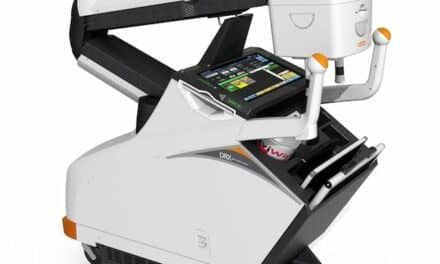
This article will discuss the different terms and conditions to look for in service contracts. The vendors—original equipment manufacturers (OEMs) and independent service organizations (ISOs)—provide different types of contracts depending on the level of coverage. Most of the vendors offer some form of a full service agreement. Different vendors may offer different coverage in their service agreements, so it is important to know what is included or covered in the contract. Following is a checklist (not all-inclusive) of terms and conditions to check before finalizing the contract.
Hours of Coverage
This is the period during which the equipment is covered under the contract. Typically, the contract coverage is 8 am through 5 pm, Monday through Friday. Other coverage hours could be 8 am through 9 pm, Monday through Friday, 7 am through 12 am, Monday through Friday, or even longer hours. Extended coverage, if needed, adds to the cost of the contract. Biomedical/clinical engineering should work with the clinical staff to determine the appropriate coverage. To determine coverage hours, consider other factors, including equipment reliability, availability of backup equipment, and hours of operation during the day (8 am to 5 pm versus 24 hours a day).
On-site Response Time
Response time is usually measured from the time the customer reports to the vendor that the “equipment is down.” The response times could vary (4 hours, 8 hours, 48 hours, etc, for example), depending on the type of the contract. The response time is typically applied during the hours of coverage. For example, if a repair request for an on-site service is made at 11 am on a Monday (assuming the coverage hours are 8 am through 5 pm, Monday through Friday), the arrival time of the service person will be 3 pm on the same day for a 4-hour response time. If a repair request for on-site service is made at 8 pm on a Tuesday (assuming the hours of coverage are 8 am through 5 pm, Monday through Friday), the arrival time of the service person will be 12 noon on Thursday for a 4-hour response time. Select appropriate on-site response times based on equipment reliability and the availability of backup equipment.
Planned (Scheduled or Preventive) Maintenance
Most of the full service agreements include planned maintenance. Some “co-op contracts” include planned maintenance as an option and may be performed by trained in-house biomedical engineering staff. Ensure that the frequency of maintenance is specified and is in accordance with the OEM recommended frequencies. Some contracts allow maintenance to be performed after-hours and may cost extra.
Parts
Most of the full service agreements include parts. They are usually provided on an exchange basis and may be new or reconditioned. Ensure that parts delivery is included and covered in the contract. Check if parts delivery is standard or priority, as priority delivery may be required if there is no backup equipment or if the primary equipment is used for extended periods during the day (18 to 24 hours per day). Depending on the type of contract and equipment, check that it includes x-ray tubes, image intensifiers, flat detectors, and SPECT/PET crystals. In an MRI scanner contract, check if it includes magnet and cryogen maintenance.
Uptime Guarantee
Uptime is defined as the ability of the equipment to be used to treat or diagnose patients. The vendors typically consider the equipment to be operational unless it cannot be used to treat or diagnose patients. Downtime (opposite of uptime) is defined as the time when the equipment is not available for use to treat or diagnose patients. Downtime does not commence until the vendor receives a notification, so it is important that the vendor is notified immediately after it is learned that the equipment is down. The customer should be aware of the specific exclusions in the uptime calculation and how it is calculated. Most vendors exclude the downtime that may have been caused by misuse, negligence, use error, inadequate environmental conditions (temperature and humidity), line power exceeding the OEM requirements of voltage, and frequency in the uptime calculation. In general, the time when the vendor is performing maintenance, changing an x-ray tube, and installing upgrades is not considered a downtime. Downtime of equipment does become a concern when a facility has only one high-use item (such as a CT or MRI scanner or a gamma camera). Vendors typically offer an uptime guarantee of 95% to 98%, depending on the type of contract.
Arif Subhan, MS, CCE, is the chief biomedical engineer, VA Nebraska-Western Iowa Health Care System, Omaha; adjunct assistant professor, biomedical engineering, University of Connecticut; and a member of 24×7’s editorial advisory board. The suggestions and views expressed in this article are of the author. They do not represent the views of the Department of Veterans Affairs or the University of Connecticut. For more information, contact .
Review Questions
- The “hours of coverage” is the period during which _________________________________.
- the equipment is covered under the contract
- the equipment is not covered under the contract
- the customer can call the vendor for service
- None of the above
- The factors to consider to determine the best “hours of coverage” include ____________________.
- equipment reliability
- availability of backup equipment
- equipment usage hours
- All of the above
- The following statement(s) is/are true for “on-site response time”: _______________________.
- It is typically applied during the hours of coverage
- It is calculated from the time the customer reports to the vendor that the “system is down”
- It could vary—4 hours, 8 hours, 48 hours, etc—depending on the type of the contract
- All of the above
- The “on-site response time” is _____________________.
- the time it takes the vendor to respond by phone to a customer reporting a “system is down”
- a standard 4 hours for all vendors
- calculated from the time the customer reports to the vendor that the “system is down”
- None of the above
- If a repair request for on-site service is made at 10 am on a Tuesday, the expected arrival time of the service person will be _______________________. (Assume that the response time is typically applied during the hours of coverage; hours of coverage: 8 am through 5 pm, Monday through Friday and a 4-hour response time).
- 2 pm on Tuesday
- 2 pm on Wednesday
- 4 pm on Tuesday
- None of the above
- Vendors typically offer an uptime guarantee of ______________, depending on the type of contract.
- 95% to 98%
- 90% to 95%
- 98% to 100%
- None of the above
See the answer
See the answer
See the answer
See the answer
See the answer
See the answer





